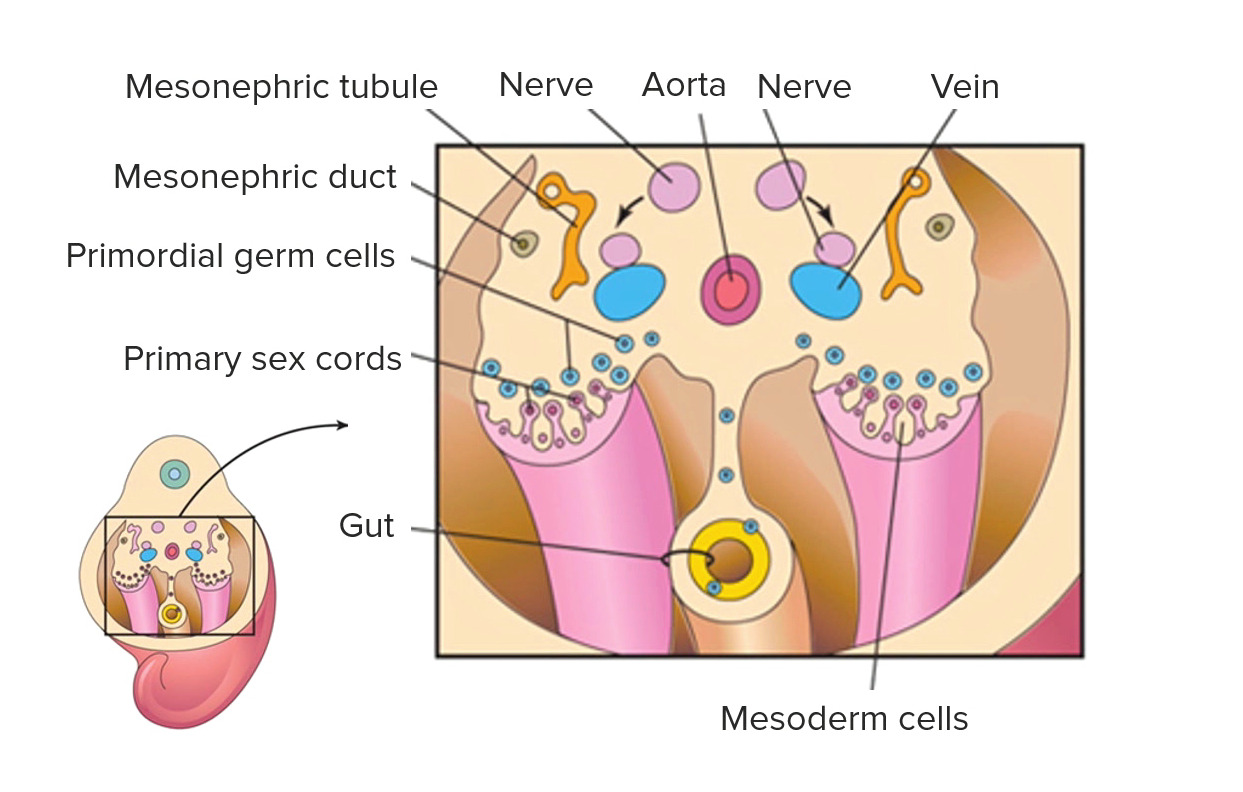Playlist
Show Playlist
Hide Playlist
Sperm and Capacitation
-
Slides Conception Pregnancy Endocrine System.pdf
-
Download Lecture Overview
00:00 Reproductive Endocrinology. Conception and Pregnancy. Here, we'll start off with the sperm. 00:12 After ejaculation, you get about 2-4 mL of volume that is ejaculated into the cervix. At this particular point, the volume is made up of a few different items. About 60% of that volume is secretions from the seminal fluid, about 20% is secretions from the prostate. The rest are buffers and cells. These cells are the sperm. Sperm have a single function and that is to fertilize the egg. Here you can see a good diagram of what a sperm is like. It has a head region, which will become important as we start the fertilization process. The neck region there has a lot of mitochondria present and those will help provide the energy necessary as well as the tail or the flagella will help propel it along. The energy needed though, this is a one-way trip. The sperm are not coming back. So it is a do or die situation for the sperm. It needs to make it to that locale and it has enough energy to do so but not any extra. In fact, it's even hard for the sperm to swim across places like the uterus. So in this case, for the uterus, it is helped along by the woman. Estrogens can help the sperm in a couple of different ways. The first is it increases watery mucus secretions that will allow the sperm to swim better. The other thing it does is the myometrial tissue will help contract that helps propel the sperm upwards to the oviduct. Along that journey, the sperm has to undergo a few changes and these changes are while it's still in the reproductive tract. These weren't changes that happen prior to ejaculation. 02:07 So what changes happen are called capacitation. This is a change in the cap or the front part of the sperm. They need to change their membrane properties so that they can better bind to the egg. The parts that changed are you remove some of the cholesterol, some of the proteins, and the carbohydrates from the membrane that is around that cap portion of the sperm. The other thing that needs to happen is there is going to be some membrane potential changes because you're going to have to be able to have a voltage-gated response in which a calcium is going to allow vesicles to be released. So that process needs to get started and you need to insert the right channels into the membrane. The final thing that happens is there is a phosphorylation of a number of proteins in the cap region. These proteins are needed for fertilization to occur.
About the Lecture
The lecture Sperm and Capacitation by Thad Wilson, PhD is from the course Reproductive Physiology.
Included Quiz Questions
What percentage of the male ejaculate represents prostatic secretion?
- 20-30%
- 10%
- 40%
- 50%
- 60%
Capacitation of sperm occurs in which portion of the sperm cell?
- Cap
- Head
- Tail
- Neck
- All structures
Customer reviews
5,0 of 5 stars
| 5 Stars |
|
5 |
| 4 Stars |
|
0 |
| 3 Stars |
|
0 |
| 2 Stars |
|
0 |
| 1 Star |
|
0 |





